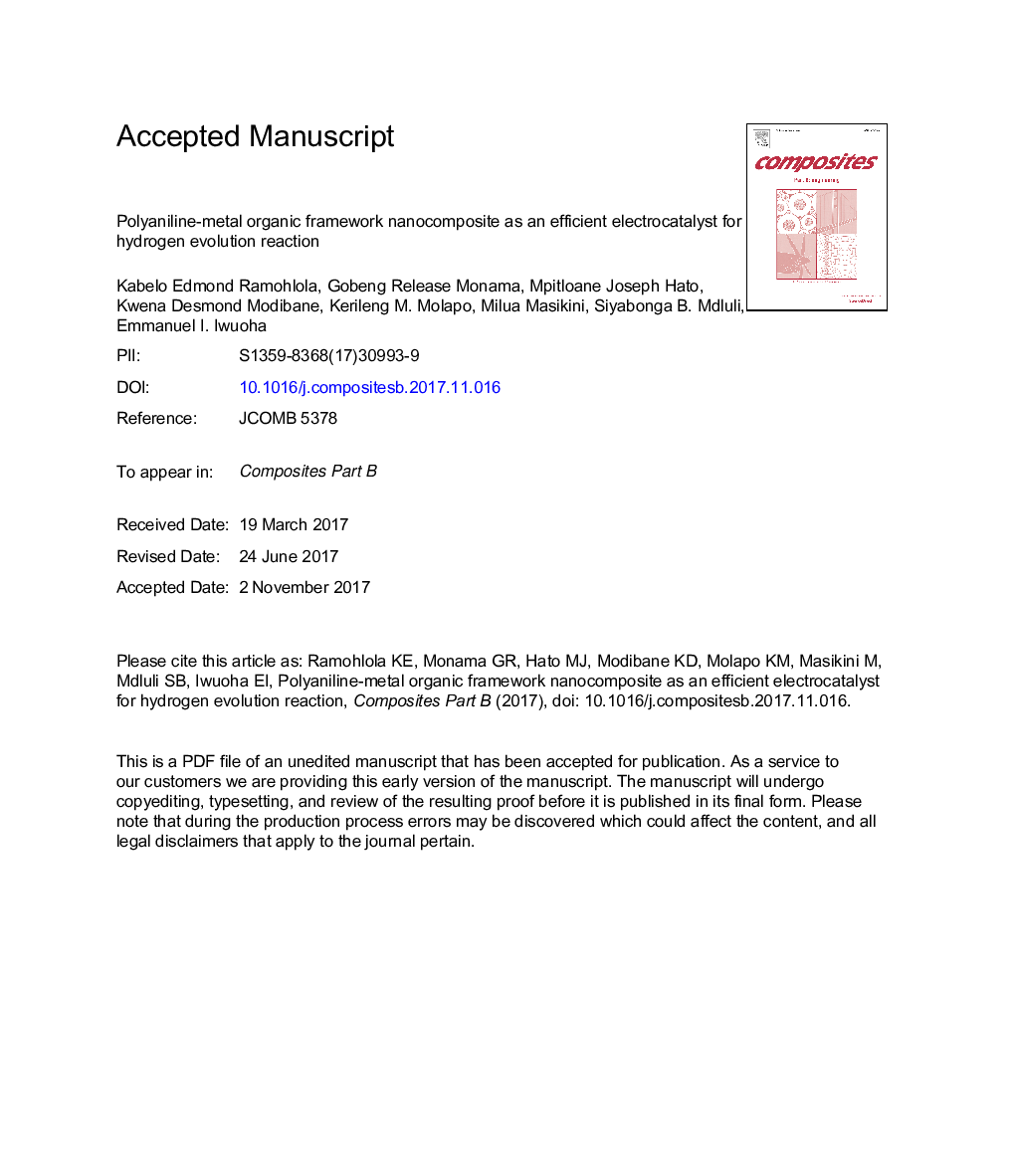| Article ID | Journal | Published Year | Pages | File Type |
|---|---|---|---|---|
| 7212328 | Composites Part B: Engineering | 2018 | 50 Pages |
Abstract
Polyaniline-metal organic framework (PANI/MOF) composite was prepared by chemical oxidation of aniline monomer in the presence of 3.6Â wt% MOF content for hydrogen evolution reaction (HER). The structure, morphology and properties of the fabricated composite were investigated. There was a clear interaction of MOF on the backbone of the PANI matrix through electrostatic interaction as investigated by both Raman and Fourier transform infrared analyses. The MOF exhibited irregular crystals with further wrapping of MOF by PANI matrix as evidenced by both scanning electron microscopy and transmission electron microscopy studies. The PANI composite showed some nanorods and microporous structure. The energy band gap values of PANI and its composite were found to be 1.50 and 1.35Â eV, respectively. The thermal stability of the neat PANI increased upon composite formation, which was due to a stabilizing effect of MOF and a change in morphology of the composite. The catalytic effect of MOF, PANI and PANI/MOF composite on HER was studied using exchange current density (i0) and charge transfer coefficient determined by the Tafel slope method. A drastic increase in catalytic H2 evolution was observed in the composite. In addition, the Tafel slope values of PANI and the composite decreased with increasing the concentration of the acid, suggesting the Volmer reaction coupled with either Heyrovsky or Tafel reaction. The i0 increased with increasing the acid concentration and in an order of PANI/MOFÂ >Â MOFÂ >Â PANI at various concentrations.
Keywords
Related Topics
Physical Sciences and Engineering
Engineering
Engineering (General)
Authors
Kabelo Edmond Ramohlola, Gobeng Release Monana, Mpitloane Joseph Hato, Kwena Desmond Modibane, Kerileng Mildred Molapo, Milua Masikini, Siyabonga Beizel Mduli, Emmanuel I. Iwuoha,
